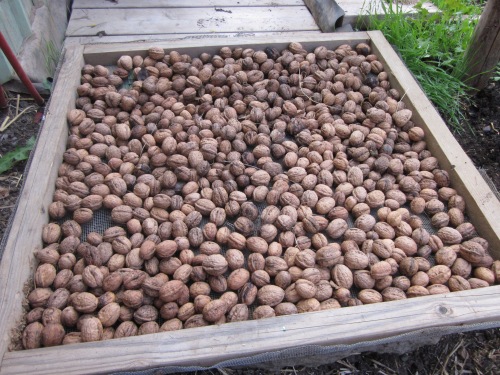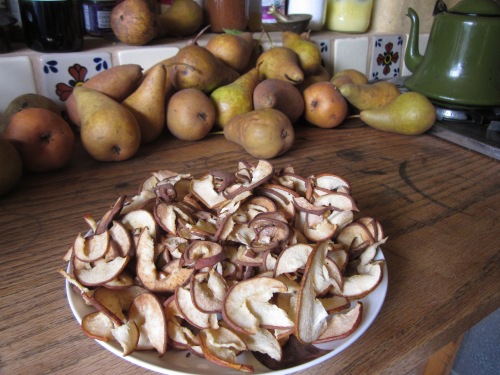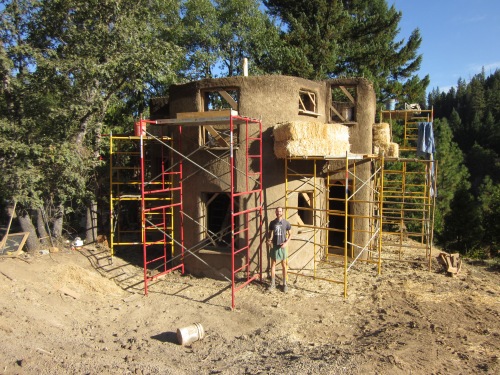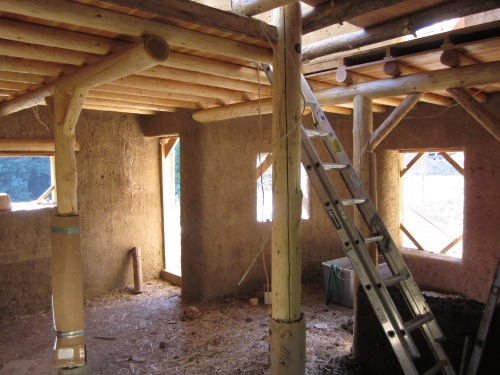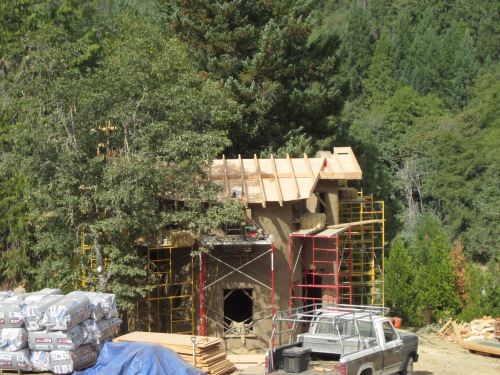At the risk of sounding corny or cliche, I think there is something primal that is reborn in us through the act of gathering wild food whether it be fishing, hunting, or foraging. In some small way (small in the sense that the overwhelming majority of us do not come close to sustaining ourselves on wild food) it reconnects us with our shared heritage as people with a strong connection with the land. And let’s be honest, we all probably have a fond memory from childhood of mulberry trees lining a dead end gravel road, a grove of trees where morels magically appeared year after year, a blackberry bramble on the edge of the woods, crisp, spicy watercress in a hidden spring gurgling from a hillside, the list goes on and on. As adults, many of us have ‘responsibilities’ which preclude such idle wandering and exploration but that does not mean such larders do not still exist, promising the joy of discovery and oftentimes abundant free food.
Case in point: on a recent drive through the countryside I came upon a number of cars parked along a tree lined stretch of road and noticed a number of hunched over people carrying an assortment of bags and buckets slowly cutting a meandering path beneath the trees. Then up ahead I spotted a shock of blonde hair, set off by a black sleeveless t-shirt and a dizzying array of tattoos, the unmistakeable visage of my pal Matty Musselwhite (aka, Punker Matt, a pool skater of near legendary status in his heyday). Being a well known self sufficiency maven and forager and general rabble rouser I knew his presence at this spot was fortuitous. So I pulled over and quickly found this lonely stretch of road to be a well tapped but highly productive source of chestnuts, walnuts and pears (part of an orchard that is apparently not being harvested as many of the pears, for what reason I do not know). That day I only had a small bag so was unable to take full advantage of the abundance but thankfully I stumbled upon this spot early in the season and have been able to return in successive weeks and harvest heaping bags full of walnuts without putting so much as a dent in what’s there. Many times as I dropped a walnut on the way to my bag only to go to pick it up and find another sitting right next to the one I had dropped. It was so easy I was literally laughing at times at how many nuts were within reach each time I bent over. My willingness to battle with the understory of brambles certainly bolstered my harvest, but nothing some sturdy rubber boots and heavily (actually more like moderately but that doesn’t sound nearly as manly) calloused (more splintered than calloused now) hands couldn’t overcome. The brambles actually prove to be a blessing as well as a curse for the intrepid forager as most are not willing to brave their thorny defenses, rewarding the ones who are (i.e. me) with an untapped cache of pristine walnuts!
From left to right; acorns, walnuts, pears and chestnuts. Not really sure what I’m going to do with the acorns yet. Apparently you can make a primitive kind of flour with them but I’ve had too many other projects going to try it out. I tried one raw and it was actually quite sweet and pretty tasty. Another was pretty astringent and not very palatable. Traditionally they were boiled numerous times depending on the type of acorn to remove the tannins. Hopefully I’ll get around to trying this eventually but until then they sure look pretty sitting around in bowls.
The four specimens.
Walnuts drying on a screen. Strictly speaking this step is not necessary for edibility but I think they taste a little better and have more flavor after drying them out a bit.
As I could not feasibly eat all the pears I gathered without getting sick of them I decided to dry them. I don’t have a dehydrator so I used the next best thing, my oven set to 175 degrees with the door ajar. The process was pretty simple. I just cut them in ~1/8 in. pieces and laid them out on a variety of racks, foil and Pyrex dishes, put them in the oven and waited, rotating occasionally. Timeframe was anywhere from about 3 hours (Pyrex) to 5 hours (rack). I guess the Pyrex just absorbs and holds more heat. Personally I like dried apples more than pears but beggars can’t be choosers. The drying process concentrates the sugars so the finished product comes out sweeter which in the case of these often disappointingly bland pears (maybe that’s why they didn’t harvest them) was a positive.
So there you have it. Happy foraging! Next up, chanterelles!



